No matter what industry you're in, data is the engine that drives everything. It can shape your marketing campaigns, guide your sales pitches, and help you make smarter investments.
Even if you have a big, impressive database, there’s a catch. For data to be valuable, it has to be current, verified, and accurate. Otherwise, you’re just throwing darts in the dark.
Data enrichment needs to be part of your routine to turn your database into a rich source of reliable information.
In this guide, we’ll break down all you need to know about data enrichment, from the definition to the types. We’ll also introduce you to the absolute best tool for data enriching. 🥇
What Is Data Enrichment?

Data enrichment is the process of augmenting raw data with new information and verifying the accuracy of current data points. With that added layer of insights, you’ll have a more complete and reliable base for all your decisions.
You can use data enrichment to add new info to your database of:
Once you update your database, you can leverage that enhanced data to improve and develop different aspects of your business, including:
💡 Bonus read: Need a recommendation for lead enrichment software? Check out our list of top choices. Read our guide to enrich data in Salesforce and learn about data protection regulations you should follow.
How Does the Data Enrichment Process Work?

To enrich data, you can pull information from two types of sources:
Each source can help you collect different pieces of info, so you can have a richer and more complete understanding of your leads and customers.
Third-party sources are more vast and give you access to more diversified information. These external databases include:
- 📁 B2B data providers
- 📁 Public records
- 📁 Social media platforms
- 📁 Industry reports
While third-party data enrichment is more common, you can also use internal data collection to augment your database. You can use surveys, forms, website analytics, and similar methods to learn more about your leads and customers. 🕵️
Types of Data Enrichment
Data enrichment comes in various forms, and your enrichment process will depend on your business goals and the data you need to achieve them. Here are the most common types:
Benefits of Data Enrichment
Once you start augmenting your data, you'll open the door to numerous benefits that can improve various parts of your business. Let’s take a closer look at what you’ll be able to achieve by enriching your database:
- Improve segmentation and targeting
- Personalize sales and marketing efforts
- Increase the value of customer insights
- Make better business decisions
Improve Segmentation and Targeting
Segmentation and targeting lay the foundation for successful sales and marketing. If your data is scarce and outdated, you’ll start with a wobbly base. This means you’ll end up with off-target campaigns, wasted time and money, and missed chances to connect with your audience. ❣️
Data enrichment will fill the blanks, verify your current data, and amp up your database with new, insightful information. With abundant data on your hands, you’ll be able to:
- Learn more about your prospects
- Refine your leads and customer segmentation
- Pinpoint specific needs and preferences of your ideal customer profile
- Develop more targeted campaigns that drive better engagement and conversions
Personalize Sales and Marketing Efforts
Personalized sales and marketing efforts have become a necessity if you want to stand out in the competitive market and appeal to your ICP. Don’t just take our word for it—here are some stats that prove it:
- 76% of consumers are more likely to buy from a brand that personalizes its communication 💌
- 78% of consumers are more likely to tell friends and family about a company that personalizes communication 👍
- 78% of consumers say personalization inspires their loyalty and entices them to repeat their purchase 🛒
The laser-specific information on leads gives you an opportunity to craft hyper-personalized sales pitches and marketing campaigns.
Your enriched database will unravel new details about leads, like their location, purchase history, and pain points, so you can know to whom you should tailor your outreach. With enriched and verified contact data, you’ll also have fewer bounced emails and dead-end phone calls.
Let’s not forget to mention that when you target the right audience with a message that resonates with them, you won’t waste money on dud marketing campaigns, and we all know what that means—higher ROI. 💲
💡 Bonus read: Get the full scoop on how data enrichment powers up sales and marketing efforts and discover how to improve your CRM data and available free trial options.
Increase the Value of Customer Insights
By learning more about your customers’ preferences and pain points, you can earn the title of their favorite brand. Data enrichment can help you with that by giving you info on their:
- Buying habits
- Interaction on your website
- Hobbies or interests
- Demographic details that influence their purchasing decisions (like age or location)
- Reviews of similar products
Primary data sources can be a huge asset in gathering this information, especially for behavioral data enrichment. Third-party data enrichment is also valuable as you can scrape insights from their social media profiles to find out more about their needs and opinions. 📱
Make Better Business Decisions
Reliable data is essential for making informed business decisions. It lets you build your strategy on data-driven insights rather than relying on assumptions and guesswork.
This can be a game-changer for gaining a competitive advantage and mapping out your company’s growth. With rich and accurate data, you can:
- Adjust your strategies based on market changes 📈
- Timely spot chances for up-selling 💵
- Plan product launches based on market trends 🖥️
- Identify potential risks and develop risk management strategies 📚
How To Enrich Data: Key Data Enrichment Steps

To be valuable and effective, data enrichment should involve a series of steps that will keep your database in top shape. Here’s what you don’t want to skip:
- Set clear criteria
- Comb through your database
- Use high-quality sources
- Make it an ongoing process
Set Clear Criteria
If you don’t limit your data enrichment, you’ll end up with a glut of irrelevant data points. So, in order not to overflow your database, you should define criteria that align with your goals. 🏆
For example, if your goal is to increase your click-through rates on emails, you should focus on collecting info like previous click behavior, email open rates, and preferred content types.
Once you have your criteria in place, you can direct your enrichment activities toward collecting more specific insights rather than filling up your database with info you don’t need. 🗑️
Comb Through Your Database
To remove inconsistencies and build a solid base, you need to clean up your data. This step can prevent data management issues and give your team organized, reliable information to work with.
Through data cleansing, you will:
- ✅ Identify duplicates
- ✅ Spot inaccuracies
- ✅ Remove outdated information
- ✅ Review the authenticity of data points
- ✅ Flag incomplete lead and customer profiles
When you’ve got that covered, you should also format and standardize your database to make it all nice and ready for the next step—enrichment.
Use High-Quality Sources
The quality of your data points depends on the quality and credibility of your sources. That means that you should use reliable data providers. 🗄️
Better yet, you should pull your data from multiple sources to cross-check their authenticity. Tools that use various data providers, rather than just one, can be of real value for this.
If you’re collecting first-party data, you should compare them with trusted external sources. This way, you can spot any misleading info left by your leads or customers. 🧑💻
Make It an Ongoing Practice
Data enrichment isn’t a one-time task. Just like other data management processes, it needs to be ongoing.
Information is like a living, breathing thing that changes and evolves, so you need to keep up with these constant changes through regular data enrichment. If you want to make sure you don’t forget about it, you have two options:
- Real-time data enrichment 🕜
- Scheduled data enrichment 🗓️
The first option will automate the process by continually adding fresh data points. This can come in handy if you’re contacting leads and customers every day and want to ensure you always have the latest information on hand.
If you don’t need a fresh batch of data at all times, you can schedule the enrichment process. For example, if you’re planning a big marketing push for a product launch, you can set up customer data enrichment ahead of time to get your database ready. 🗃️
Manual vs. Automatic Data Enrichment

How you enrich your data is as important as the process itself. Your choice of enrichment method will affect:
- Costs
- Quality of data
- Workflows
- Team’s workload
Here are the two approaches you can choose from:
- Manual enrichment ✍️
- Automatic enrichment 🦾
With manual enrichment, you have to go through your contacts one by one, research them, and enter the new data points by hand. While this cuts down the cost of paying for an enrichment tool, it is more time-consuming and can lead to errors in your database.
If you have a big database, the thought of manually sifting through hundreds or thousands of data points can be overwhelming. In that case, you should go with automatic enrichment.
Data enrichment tools tap into data sources like B2B data providers, websites, and social media accounts to scrape and collect information on your leads or customers. They can also verify your current data and detect inaccuracies.
You can filter which data points you need and even what providers you want the tool to check to get the most relevant and accurate information.
Another advantage is that you can integrate the tool into your CRM or sales systems, so you won’t have to manually export and upload the updated data. Just make sure that the platforms are compatible.
These tools can handle the heavy lifting, streamline your workflows, and ease your team’s workload, but you’ll need to factor in your needs and the expense. So, let’s zoom in on how to find the right match for you.
The Best Tool for Enriching Data
A lot of data enrichment companies promise to revolutionize your data, but not all live up to the hype. On top of that, your needs are unique to your business, so it can be tricky to make out which tool is the perfect fit.
To start your search on the right foot, consider these factors when browsing for data enrichment services:
You don’t need to add another task to your busy schedule—we can make your search a lot easier. The data enrichment tool that takes the crown is Clay. 👑
This tool delivers everything from this list of must-haves—and beyond that. Let’s take a look at what makes it such a perfect solution for your data enrichment needs.
Why Is Clay the Ultimate Data Enrichment Tool?

Clay is an advanced platform with plenty of fantastic features to enrich your database. 💫
With this tool, you’ll get access to:
- Dozens of data providers ✔️
- Verified information ✔️
- Selective and broad enrichment ✔️
- AI-driven tools ✔️
Instead of relying on a single source for data collection, Clay integrates with over 50 providers. By tapping into multiple external databases, it can enrich your data with any data point you need.
Besides extensive coverage, the platform also guarantees accuracy through waterfall enrichment.
This nifty feature goes through providers sequentially to find and validate the information. You have complete control as it lets you pick the providers and data points you want. The search stops the second Clay collects the data, and you only pay for successful searches—now that’s a way to save money. 💰

If you want a specific piece of information, you can turn to Claygent—an AI web scraper. Provide it a prompt like you would in ChatGPT, and it will search the web far and wide to find what you’re looking for. 🤖
Once you enrich your database, you can:
If want to use the enriched data for your campaigns, Clay’s AI message builder can draft hyper-personalized emails in a jiff. From there, you can add them to your email sequencer and set it in motion.
Clay: The Perfect All-in-One Solution

Clay is an all-in-one sales automation platform that can take over many other tasks besides data enrichment. 🤹
For example, if you want to pull data from certain web pages, the Chrome extension comes to the rescue. You can use the built-in recipes to automatically pick out the data you need with a single click. Clay also lets you create your own custom recipes to match your specific data requirements. 🧾
Clay keeps your database organized, but it also comes with handy tools for cleaning up and formatting your data. Use its Formatters to:
- Standardize company names ✔️
- Normalize phone numbers ✔️
- Adjust date and time formats ✔️
- Remove extra spaces ✔️
Another way to streamline your workflows is to use Clay's pre-made templates. They let you set up mundane processes in a few clicks, including:
The best way to show Clay’s value is its hundreds of happy users who swear by this tool. Here’s a testimonial from one of them:

Clay Fits Right in With Your Tech Stack

If you love all the features, but worry whether Clay can connect with your tech stack, let us clear that up. The platform links to over 100 apps, systems, and software so there’s a slim chance that your tools aren’t on its list. 📋
You can connect it to all the popular CRM platforms, like:
Clay can also keep your CRM up-to-date round the clock with its CRM enrichment feature. Thanks to the two-way sync, it will send fresh data points to your CRM automatically. You can even use Clay's built-in formulas to tidy up and format all your CRM data. 🧹
How Much Does Clay Cost?
Above all, Clay delivers the best value for the price on the market. It has transparent and flexible pricing, so it will suit your needs whether you’re just starting out or need data enrichment for an enterprise.
If you’d like to give it a spin before you sign up, take advantage of its free forever plan. Once you decide to upgrade, you can choose between these paid plans:
Clay’s all about supporting your growth, so you’ll be able to add unlimited users with every plan. ❣️
Sign Up With Clay in Three Steps
Only three simple steps are standing between you and Clay. Here’s how you can get access to Clay’s stellar features:
- Go to the signup page 🧑💻
- Enter your name, email, and password ⌨️
- Start using Clay’s powerful features ⚙️
You can learn more about Clay, its perks, and features by visiting Clay University. It's packed with tutorials and feature walkthroughs, to minimize the learning curve.
We also suggest joining Clay’s Slack community to get inside info from users on how they take advantage of the platform to reach their goals. ✨
For industry tips, tricks, and updates, you can sign up for Clay’s newsletter.
💡 Bonus read: Your learning journey about data enrichment doesn’t need to end here. Check out these detailed guides for more info:
No matter what industry you're in, data is the engine that drives everything. It can shape your marketing campaigns, guide your sales pitches, and help you make smarter investments.
Even if you have a big, impressive database, there’s a catch. For data to be valuable, it has to be current, verified, and accurate. Otherwise, you’re just throwing darts in the dark.
Data enrichment needs to be part of your routine to turn your database into a rich source of reliable information.
In this guide, we’ll break down all you need to know about data enrichment, from the definition to the types. We’ll also introduce you to the absolute best tool for data enriching. 🥇
What Is Data Enrichment?

Data enrichment is the process of augmenting raw data with new information and verifying the accuracy of current data points. With that added layer of insights, you’ll have a more complete and reliable base for all your decisions.
You can use data enrichment to add new info to your database of:
Once you update your database, you can leverage that enhanced data to improve and develop different aspects of your business, including:
💡 Bonus read: Need a recommendation for lead enrichment software? Check out our list of top choices. Read our guide to enrich data in Salesforce and learn about data protection regulations you should follow.
How Does the Data Enrichment Process Work?

To enrich data, you can pull information from two types of sources:
Each source can help you collect different pieces of info, so you can have a richer and more complete understanding of your leads and customers.
Third-party sources are more vast and give you access to more diversified information. These external databases include:
- 📁 B2B data providers
- 📁 Public records
- 📁 Social media platforms
- 📁 Industry reports
While third-party data enrichment is more common, you can also use internal data collection to augment your database. You can use surveys, forms, website analytics, and similar methods to learn more about your leads and customers. 🕵️
Types of Data Enrichment
Data enrichment comes in various forms, and your enrichment process will depend on your business goals and the data you need to achieve them. Here are the most common types:
Benefits of Data Enrichment
Once you start augmenting your data, you'll open the door to numerous benefits that can improve various parts of your business. Let’s take a closer look at what you’ll be able to achieve by enriching your database:
- Improve segmentation and targeting
- Personalize sales and marketing efforts
- Increase the value of customer insights
- Make better business decisions
Improve Segmentation and Targeting
Segmentation and targeting lay the foundation for successful sales and marketing. If your data is scarce and outdated, you’ll start with a wobbly base. This means you’ll end up with off-target campaigns, wasted time and money, and missed chances to connect with your audience. ❣️
Data enrichment will fill the blanks, verify your current data, and amp up your database with new, insightful information. With abundant data on your hands, you’ll be able to:
- Learn more about your prospects
- Refine your leads and customer segmentation
- Pinpoint specific needs and preferences of your ideal customer profile
- Develop more targeted campaigns that drive better engagement and conversions
Personalize Sales and Marketing Efforts
Personalized sales and marketing efforts have become a necessity if you want to stand out in the competitive market and appeal to your ICP. Don’t just take our word for it—here are some stats that prove it:
- 76% of consumers are more likely to buy from a brand that personalizes its communication 💌
- 78% of consumers are more likely to tell friends and family about a company that personalizes communication 👍
- 78% of consumers say personalization inspires their loyalty and entices them to repeat their purchase 🛒
The laser-specific information on leads gives you an opportunity to craft hyper-personalized sales pitches and marketing campaigns.
Your enriched database will unravel new details about leads, like their location, purchase history, and pain points, so you can know to whom you should tailor your outreach. With enriched and verified contact data, you’ll also have fewer bounced emails and dead-end phone calls.
Let’s not forget to mention that when you target the right audience with a message that resonates with them, you won’t waste money on dud marketing campaigns, and we all know what that means—higher ROI. 💲
💡 Bonus read: Get the full scoop on how data enrichment powers up sales and marketing efforts and discover how to improve your CRM data and available free trial options.
Increase the Value of Customer Insights
By learning more about your customers’ preferences and pain points, you can earn the title of their favorite brand. Data enrichment can help you with that by giving you info on their:
- Buying habits
- Interaction on your website
- Hobbies or interests
- Demographic details that influence their purchasing decisions (like age or location)
- Reviews of similar products
Primary data sources can be a huge asset in gathering this information, especially for behavioral data enrichment. Third-party data enrichment is also valuable as you can scrape insights from their social media profiles to find out more about their needs and opinions. 📱
Make Better Business Decisions
Reliable data is essential for making informed business decisions. It lets you build your strategy on data-driven insights rather than relying on assumptions and guesswork.
This can be a game-changer for gaining a competitive advantage and mapping out your company’s growth. With rich and accurate data, you can:
- Adjust your strategies based on market changes 📈
- Timely spot chances for up-selling 💵
- Plan product launches based on market trends 🖥️
- Identify potential risks and develop risk management strategies 📚
How To Enrich Data: Key Data Enrichment Steps

To be valuable and effective, data enrichment should involve a series of steps that will keep your database in top shape. Here’s what you don’t want to skip:
- Set clear criteria
- Comb through your database
- Use high-quality sources
- Make it an ongoing process
Set Clear Criteria
If you don’t limit your data enrichment, you’ll end up with a glut of irrelevant data points. So, in order not to overflow your database, you should define criteria that align with your goals. 🏆
For example, if your goal is to increase your click-through rates on emails, you should focus on collecting info like previous click behavior, email open rates, and preferred content types.
Once you have your criteria in place, you can direct your enrichment activities toward collecting more specific insights rather than filling up your database with info you don’t need. 🗑️
Comb Through Your Database
To remove inconsistencies and build a solid base, you need to clean up your data. This step can prevent data management issues and give your team organized, reliable information to work with.
Through data cleansing, you will:
- ✅ Identify duplicates
- ✅ Spot inaccuracies
- ✅ Remove outdated information
- ✅ Review the authenticity of data points
- ✅ Flag incomplete lead and customer profiles
When you’ve got that covered, you should also format and standardize your database to make it all nice and ready for the next step—enrichment.
Use High-Quality Sources
The quality of your data points depends on the quality and credibility of your sources. That means that you should use reliable data providers. 🗄️
Better yet, you should pull your data from multiple sources to cross-check their authenticity. Tools that use various data providers, rather than just one, can be of real value for this.
If you’re collecting first-party data, you should compare them with trusted external sources. This way, you can spot any misleading info left by your leads or customers. 🧑💻
Make It an Ongoing Practice
Data enrichment isn’t a one-time task. Just like other data management processes, it needs to be ongoing.
Information is like a living, breathing thing that changes and evolves, so you need to keep up with these constant changes through regular data enrichment. If you want to make sure you don’t forget about it, you have two options:
- Real-time data enrichment 🕜
- Scheduled data enrichment 🗓️
The first option will automate the process by continually adding fresh data points. This can come in handy if you’re contacting leads and customers every day and want to ensure you always have the latest information on hand.
If you don’t need a fresh batch of data at all times, you can schedule the enrichment process. For example, if you’re planning a big marketing push for a product launch, you can set up customer data enrichment ahead of time to get your database ready. 🗃️
Manual vs. Automatic Data Enrichment

How you enrich your data is as important as the process itself. Your choice of enrichment method will affect:
- Costs
- Quality of data
- Workflows
- Team’s workload
Here are the two approaches you can choose from:
- Manual enrichment ✍️
- Automatic enrichment 🦾
With manual enrichment, you have to go through your contacts one by one, research them, and enter the new data points by hand. While this cuts down the cost of paying for an enrichment tool, it is more time-consuming and can lead to errors in your database.
If you have a big database, the thought of manually sifting through hundreds or thousands of data points can be overwhelming. In that case, you should go with automatic enrichment.
Data enrichment tools tap into data sources like B2B data providers, websites, and social media accounts to scrape and collect information on your leads or customers. They can also verify your current data and detect inaccuracies.
You can filter which data points you need and even what providers you want the tool to check to get the most relevant and accurate information.
Another advantage is that you can integrate the tool into your CRM or sales systems, so you won’t have to manually export and upload the updated data. Just make sure that the platforms are compatible.
These tools can handle the heavy lifting, streamline your workflows, and ease your team’s workload, but you’ll need to factor in your needs and the expense. So, let’s zoom in on how to find the right match for you.
The Best Tool for Enriching Data
A lot of data enrichment companies promise to revolutionize your data, but not all live up to the hype. On top of that, your needs are unique to your business, so it can be tricky to make out which tool is the perfect fit.
To start your search on the right foot, consider these factors when browsing for data enrichment services:
You don’t need to add another task to your busy schedule—we can make your search a lot easier. The data enrichment tool that takes the crown is Clay. 👑
This tool delivers everything from this list of must-haves—and beyond that. Let’s take a look at what makes it such a perfect solution for your data enrichment needs.
Why Is Clay the Ultimate Data Enrichment Tool?

Clay is an advanced platform with plenty of fantastic features to enrich your database. 💫
With this tool, you’ll get access to:
- Dozens of data providers ✔️
- Verified information ✔️
- Selective and broad enrichment ✔️
- AI-driven tools ✔️
Instead of relying on a single source for data collection, Clay integrates with over 50 providers. By tapping into multiple external databases, it can enrich your data with any data point you need.
Besides extensive coverage, the platform also guarantees accuracy through waterfall enrichment.
This nifty feature goes through providers sequentially to find and validate the information. You have complete control as it lets you pick the providers and data points you want. The search stops the second Clay collects the data, and you only pay for successful searches—now that’s a way to save money. 💰

If you want a specific piece of information, you can turn to Claygent—an AI web scraper. Provide it a prompt like you would in ChatGPT, and it will search the web far and wide to find what you’re looking for. 🤖
Once you enrich your database, you can:
If want to use the enriched data for your campaigns, Clay’s AI message builder can draft hyper-personalized emails in a jiff. From there, you can add them to your email sequencer and set it in motion.
Clay: The Perfect All-in-One Solution

Clay is an all-in-one sales automation platform that can take over many other tasks besides data enrichment. 🤹
For example, if you want to pull data from certain web pages, the Chrome extension comes to the rescue. You can use the built-in recipes to automatically pick out the data you need with a single click. Clay also lets you create your own custom recipes to match your specific data requirements. 🧾
Clay keeps your database organized, but it also comes with handy tools for cleaning up and formatting your data. Use its Formatters to:
- Standardize company names ✔️
- Normalize phone numbers ✔️
- Adjust date and time formats ✔️
- Remove extra spaces ✔️
Another way to streamline your workflows is to use Clay's pre-made templates. They let you set up mundane processes in a few clicks, including:
The best way to show Clay’s value is its hundreds of happy users who swear by this tool. Here’s a testimonial from one of them:

Clay Fits Right in With Your Tech Stack

If you love all the features, but worry whether Clay can connect with your tech stack, let us clear that up. The platform links to over 100 apps, systems, and software so there’s a slim chance that your tools aren’t on its list. 📋
You can connect it to all the popular CRM platforms, like:
Clay can also keep your CRM up-to-date round the clock with its CRM enrichment feature. Thanks to the two-way sync, it will send fresh data points to your CRM automatically. You can even use Clay's built-in formulas to tidy up and format all your CRM data. 🧹
How Much Does Clay Cost?
Above all, Clay delivers the best value for the price on the market. It has transparent and flexible pricing, so it will suit your needs whether you’re just starting out or need data enrichment for an enterprise.
If you’d like to give it a spin before you sign up, take advantage of its free forever plan. Once you decide to upgrade, you can choose between these paid plans:
Clay’s all about supporting your growth, so you’ll be able to add unlimited users with every plan. ❣️
Sign Up With Clay in Three Steps
Only three simple steps are standing between you and Clay. Here’s how you can get access to Clay’s stellar features:
- Go to the signup page 🧑💻
- Enter your name, email, and password ⌨️
- Start using Clay’s powerful features ⚙️
You can learn more about Clay, its perks, and features by visiting Clay University. It's packed with tutorials and feature walkthroughs, to minimize the learning curve.
We also suggest joining Clay’s Slack community to get inside info from users on how they take advantage of the platform to reach their goals. ✨
For industry tips, tricks, and updates, you can sign up for Clay’s newsletter.
💡 Bonus read: Your learning journey about data enrichment doesn’t need to end here. Check out these detailed guides for more info:



















.jpg)
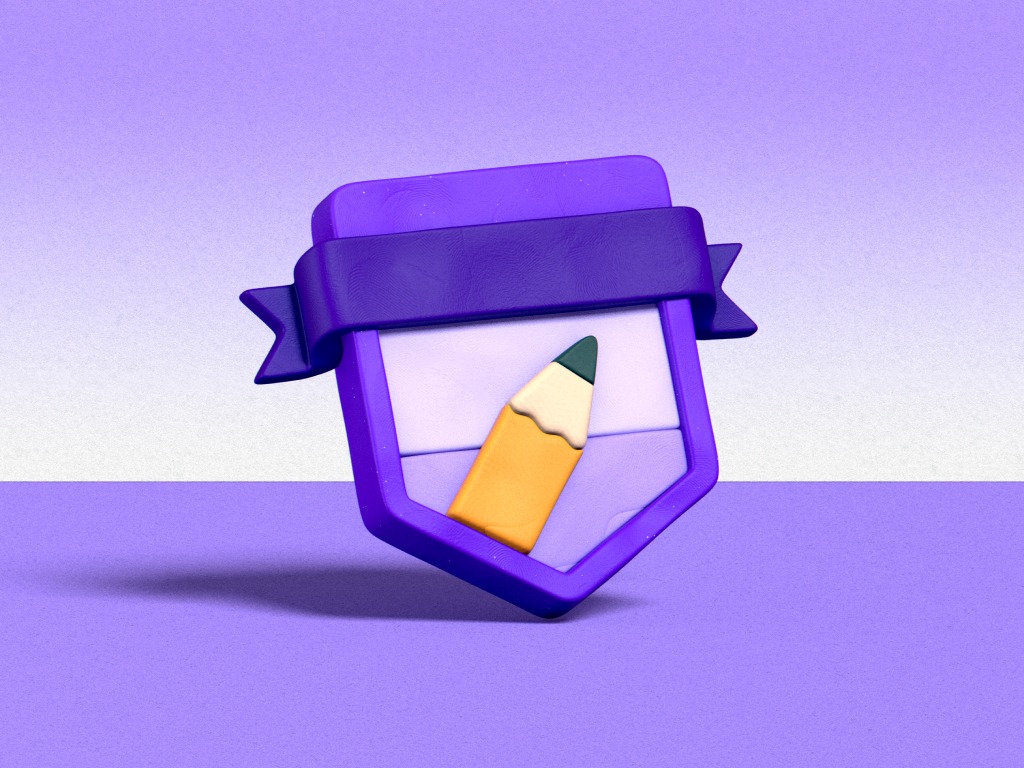


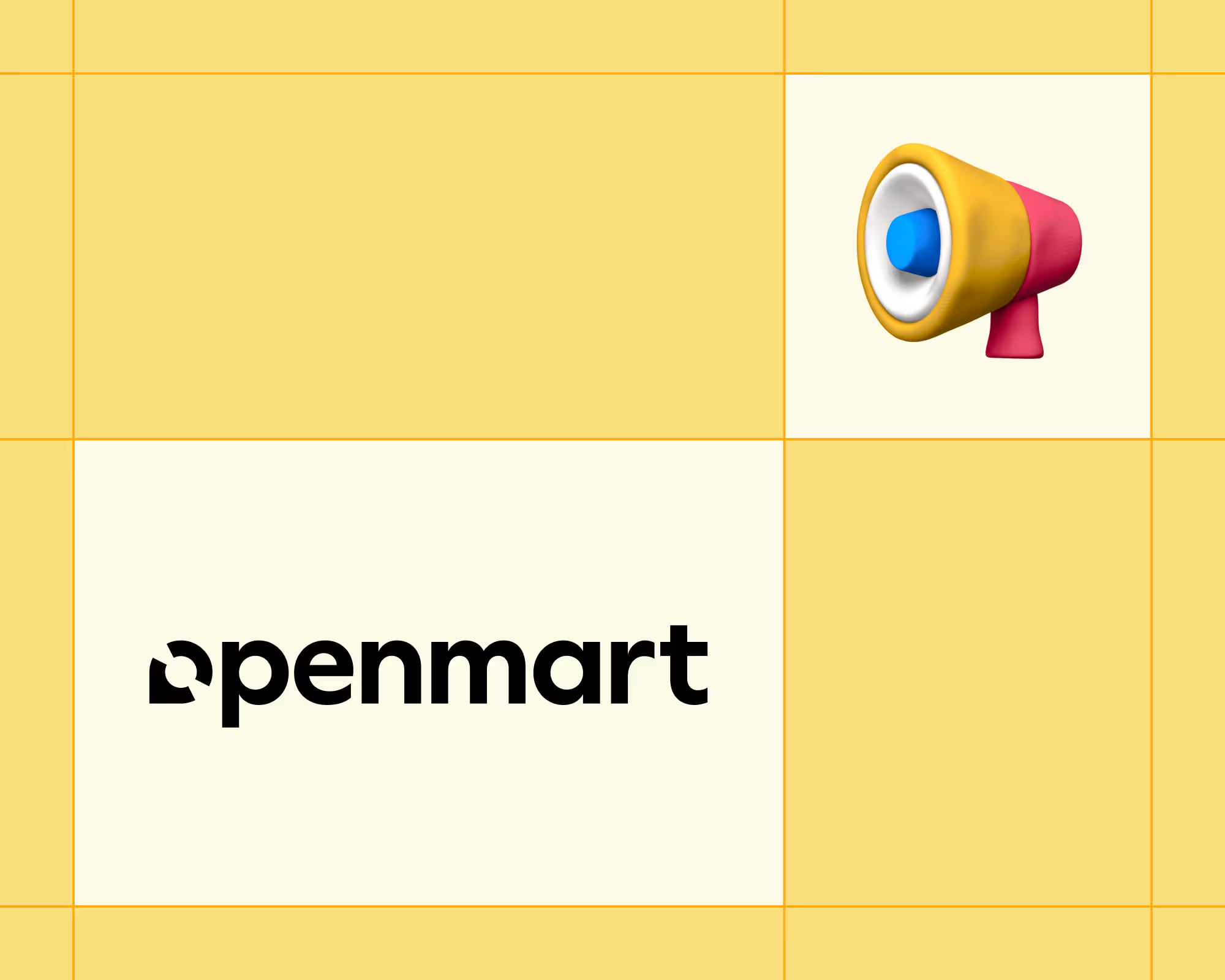
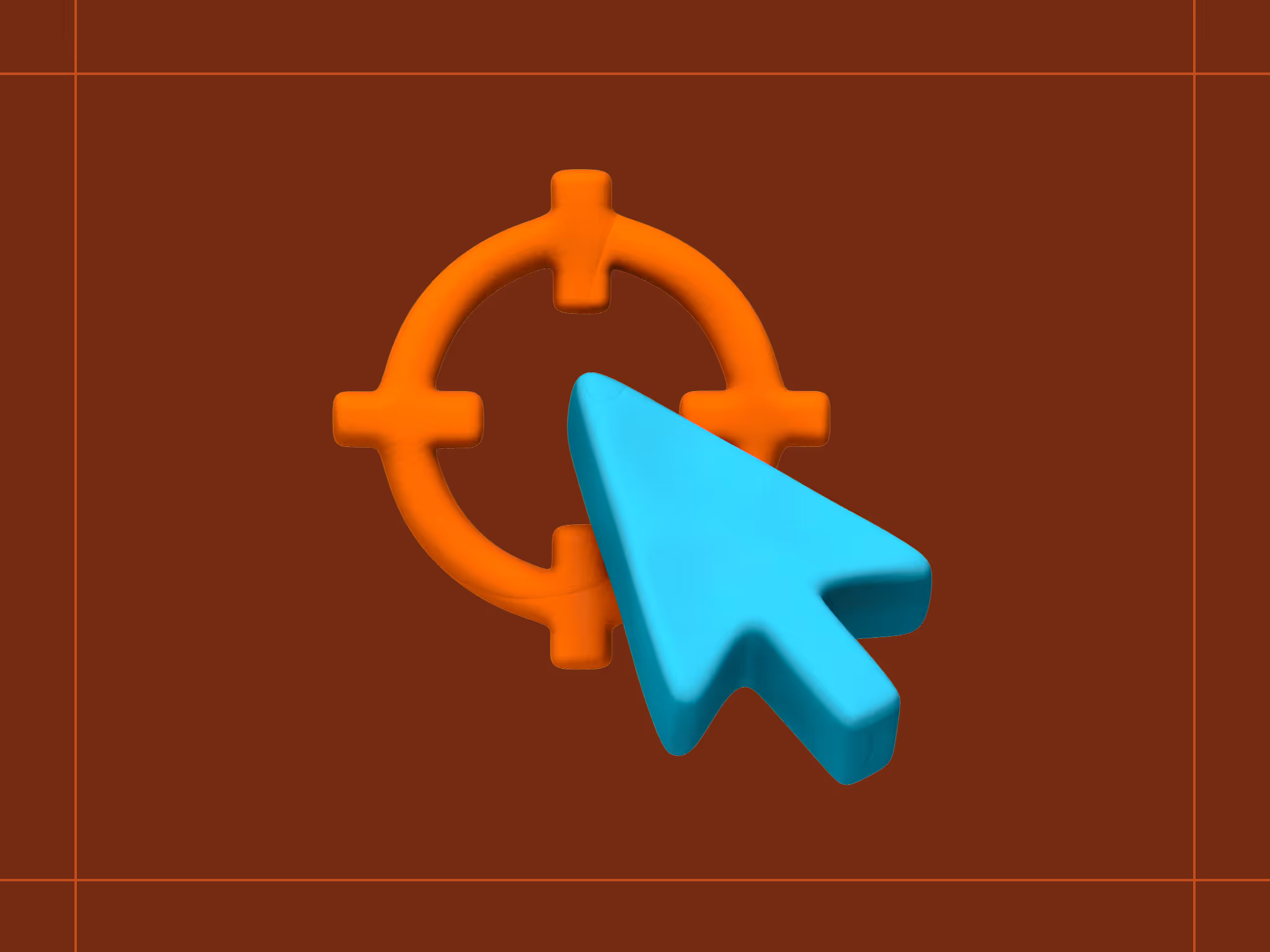
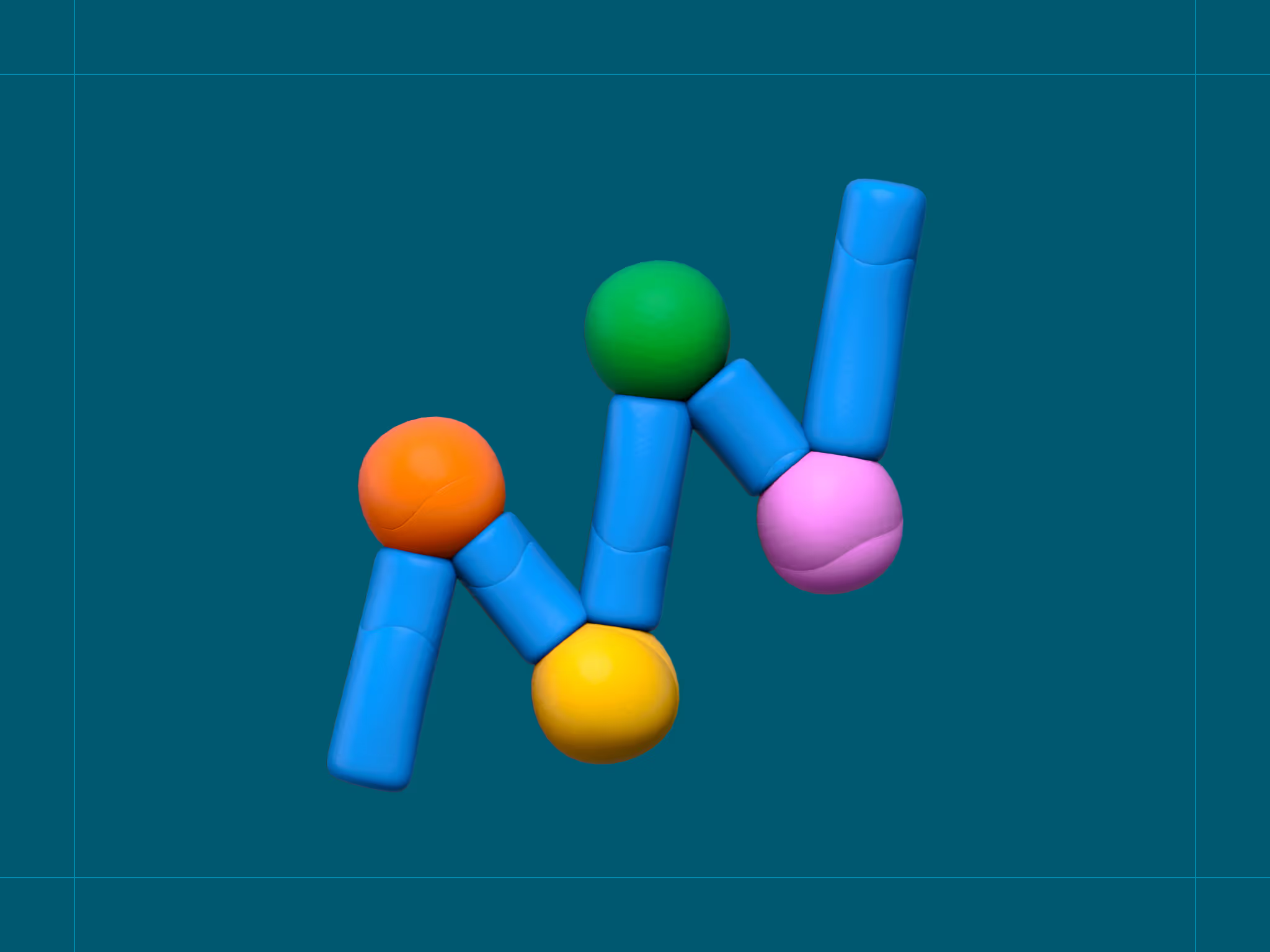
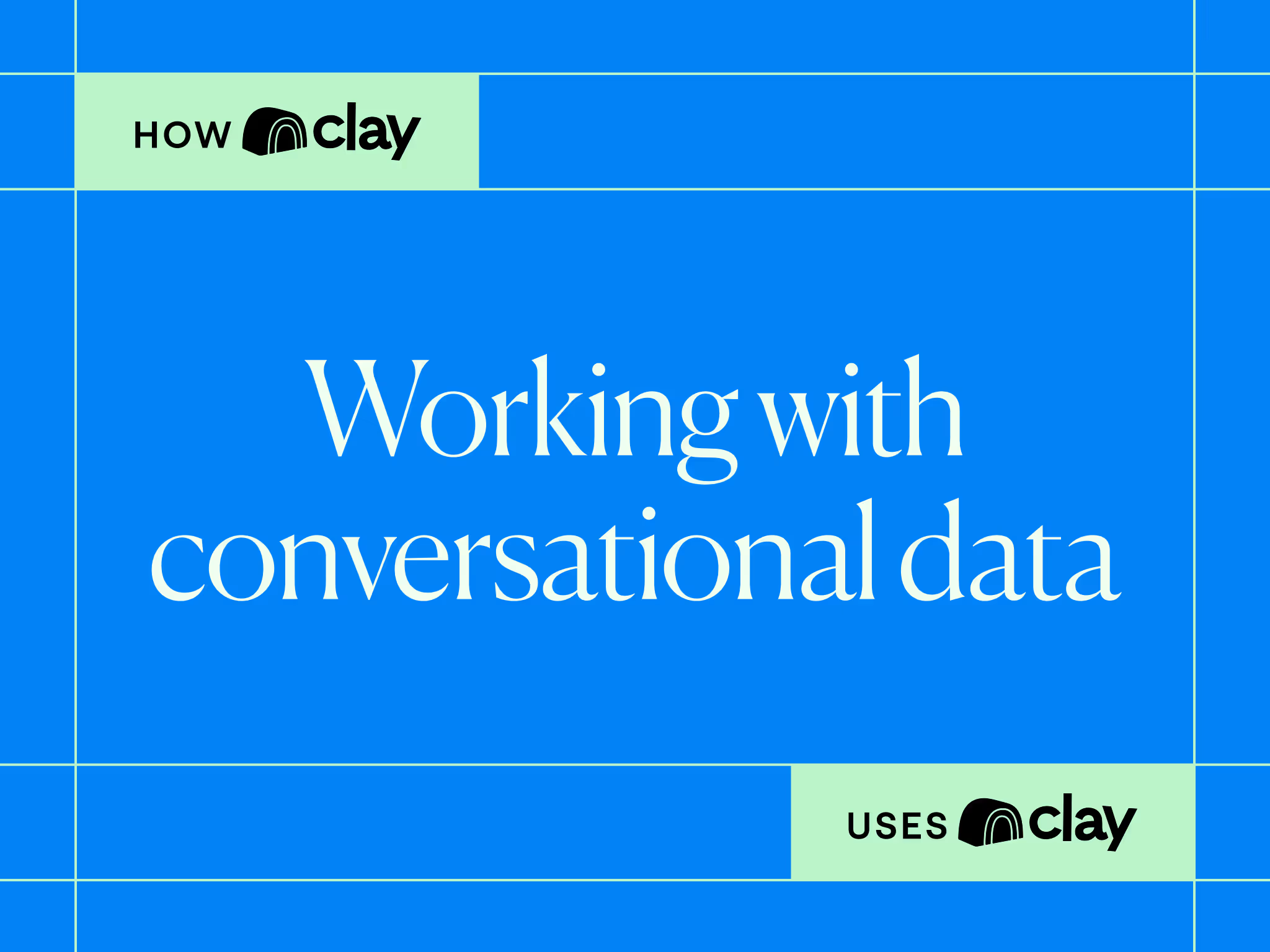
.avif)





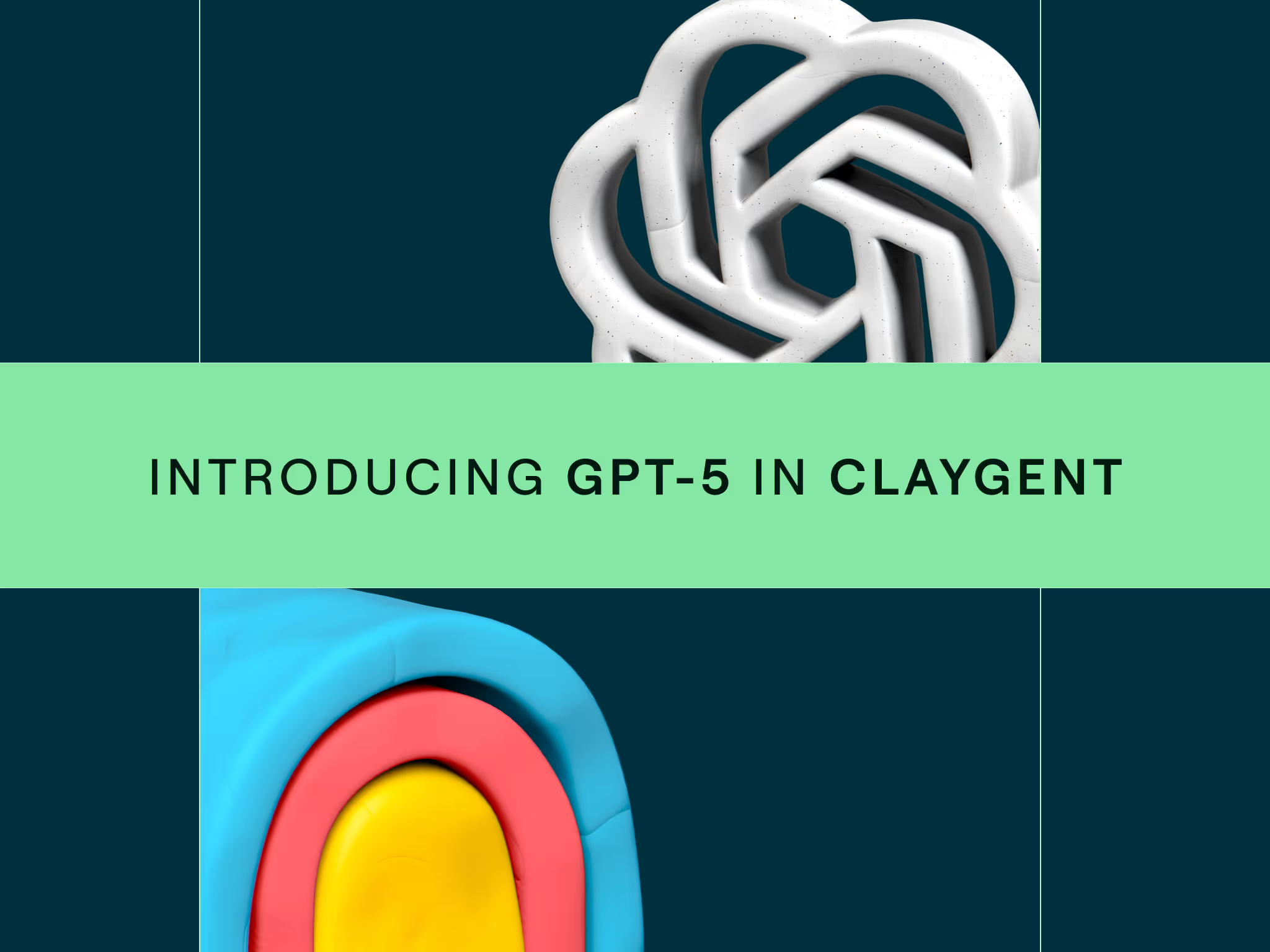
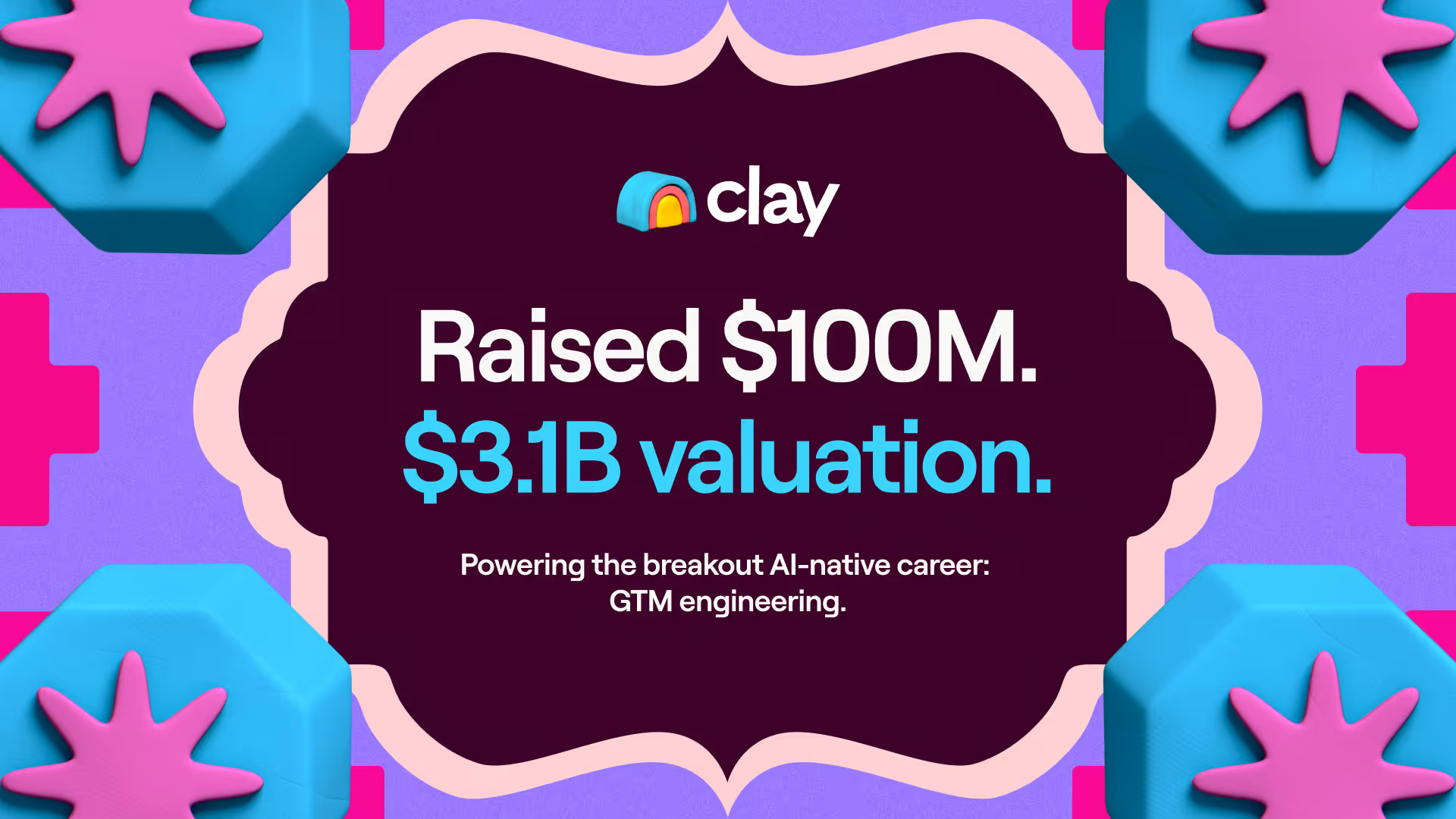




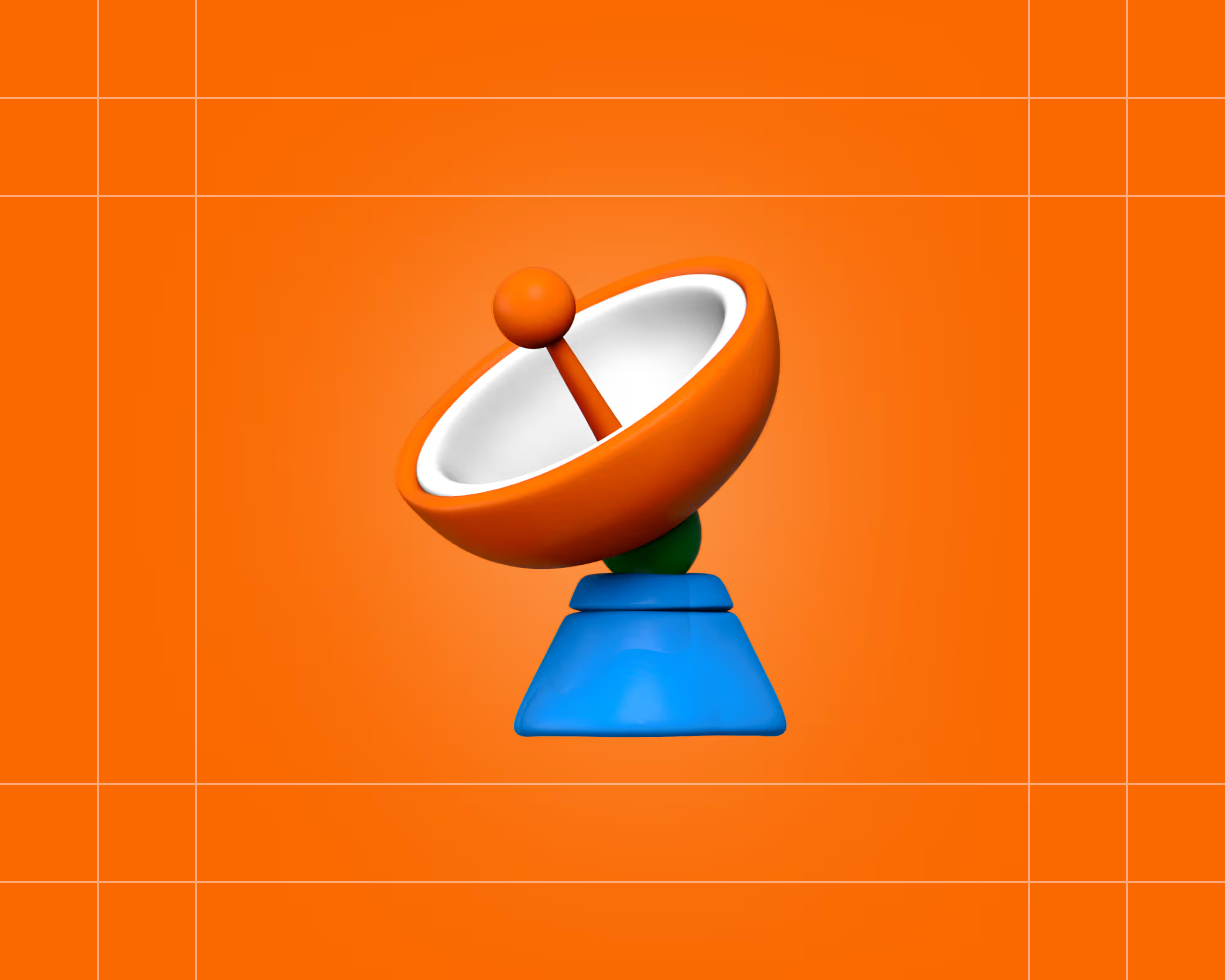


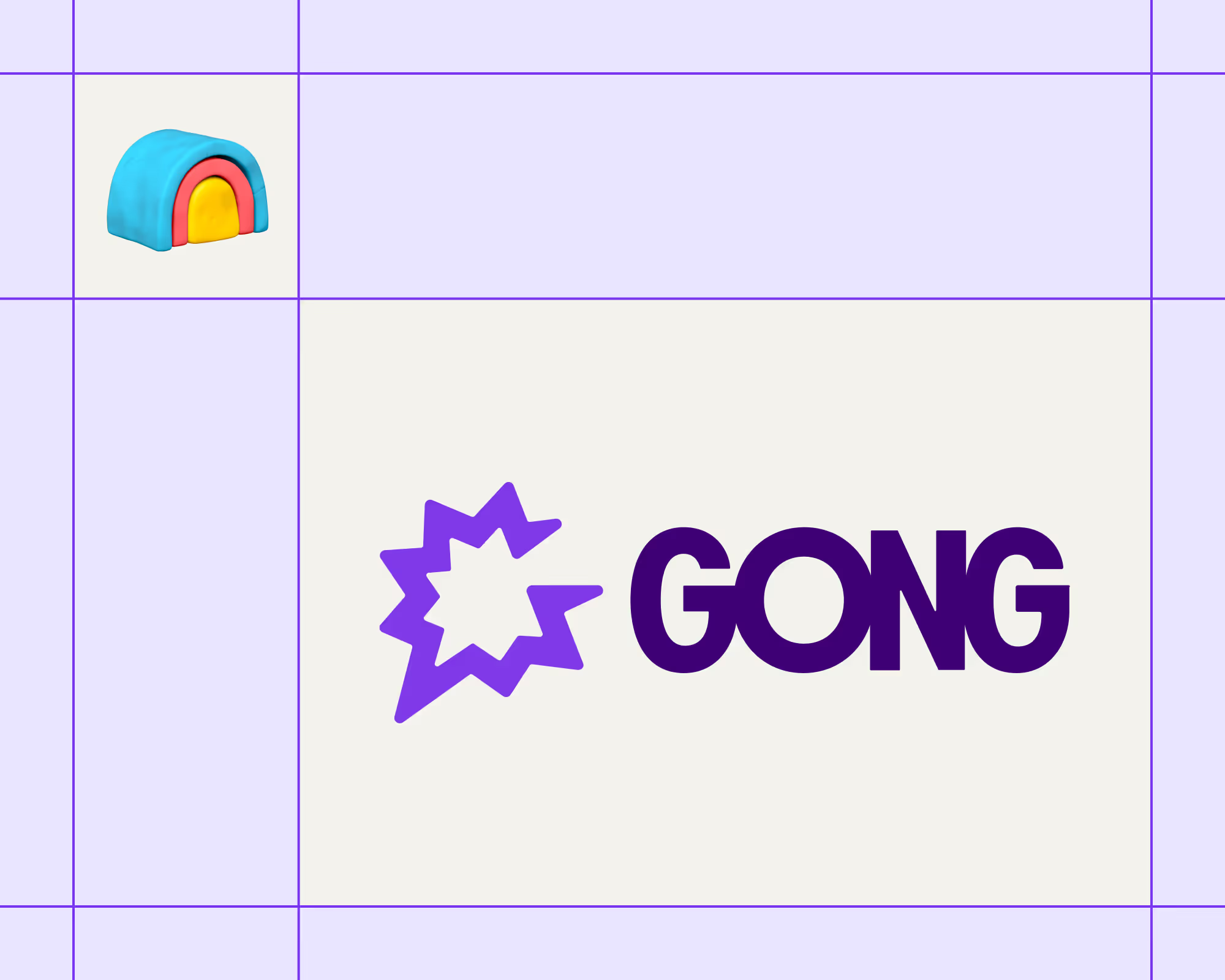

.avif)











.avif)
.avif)






















































